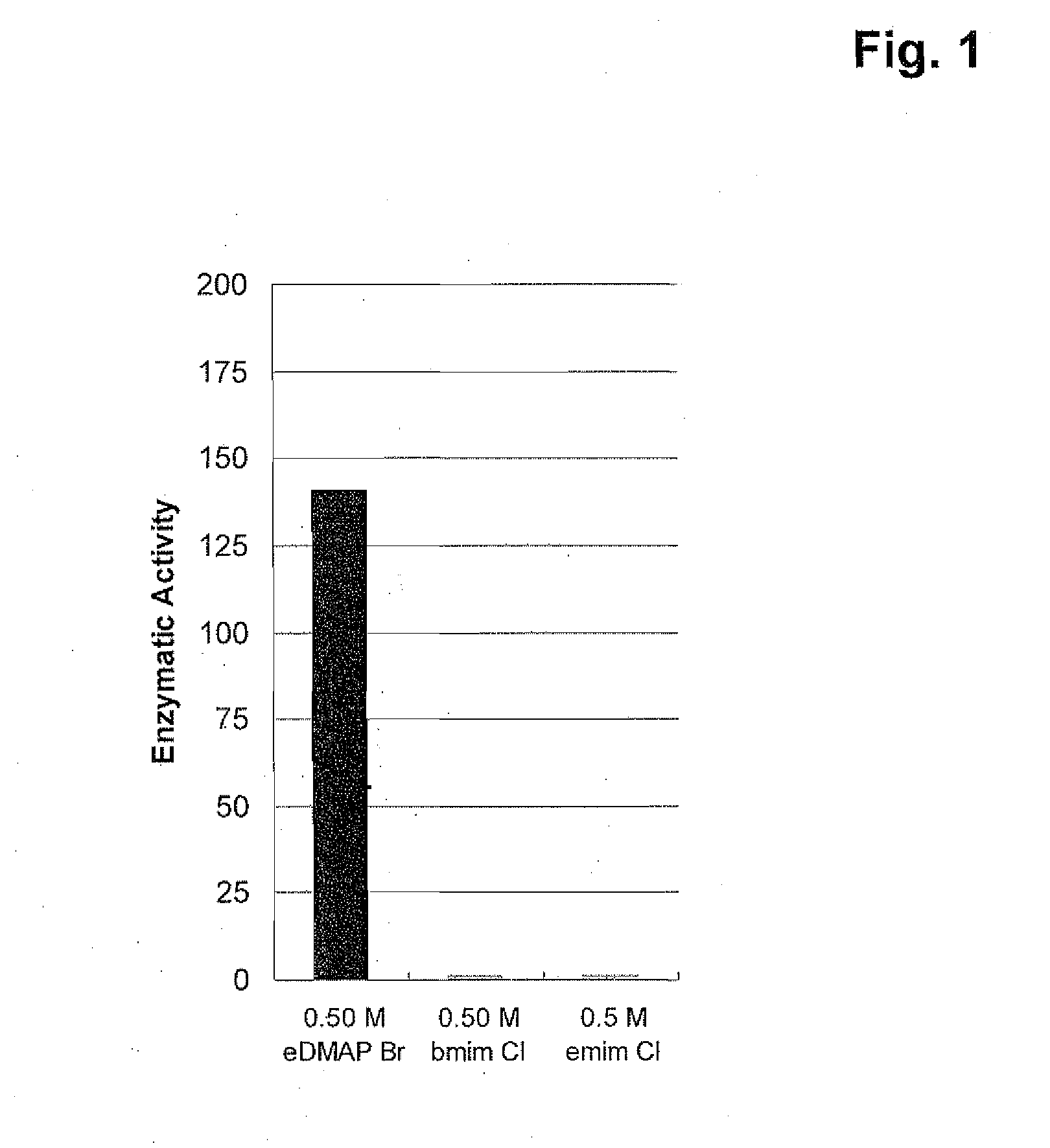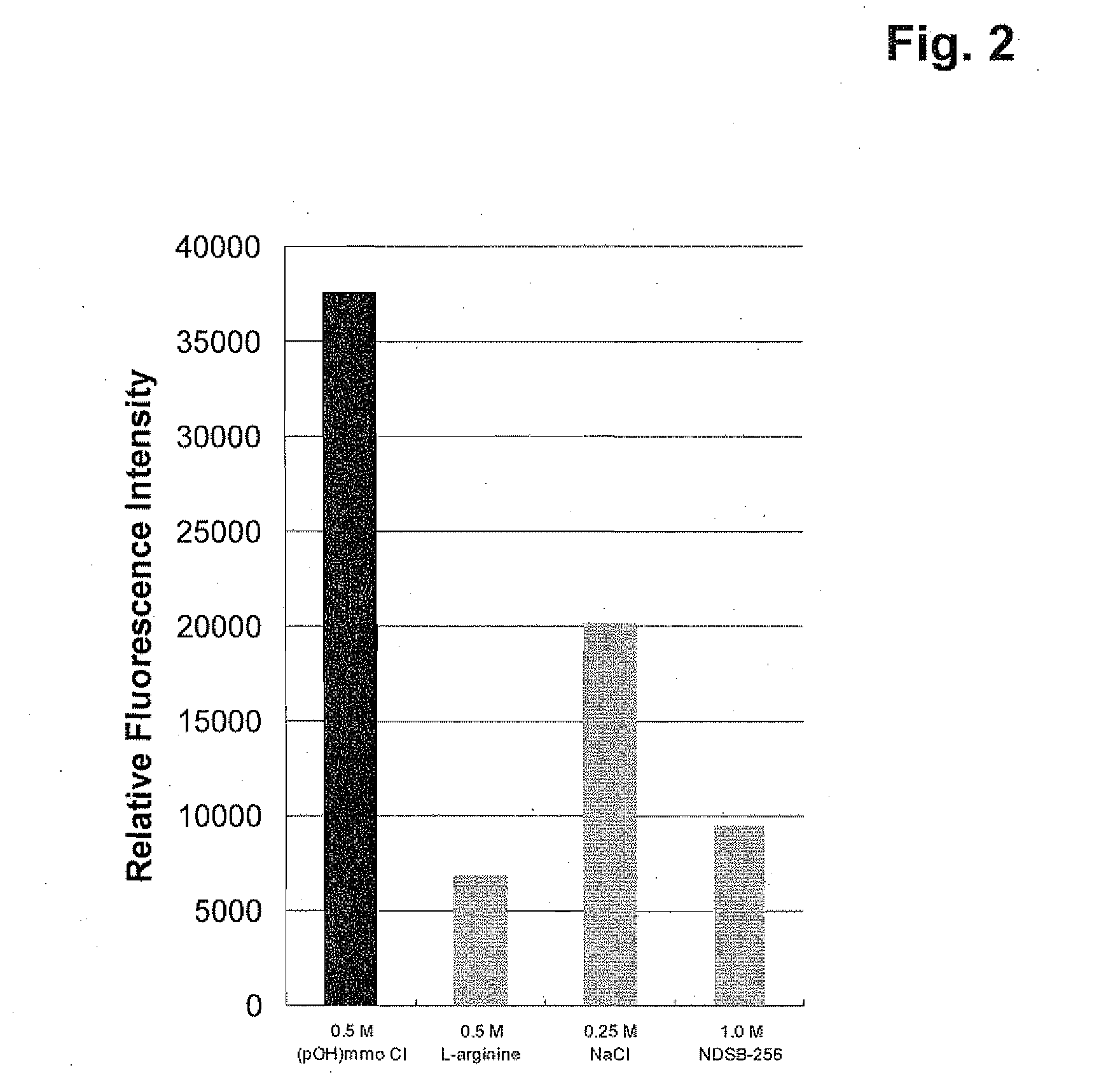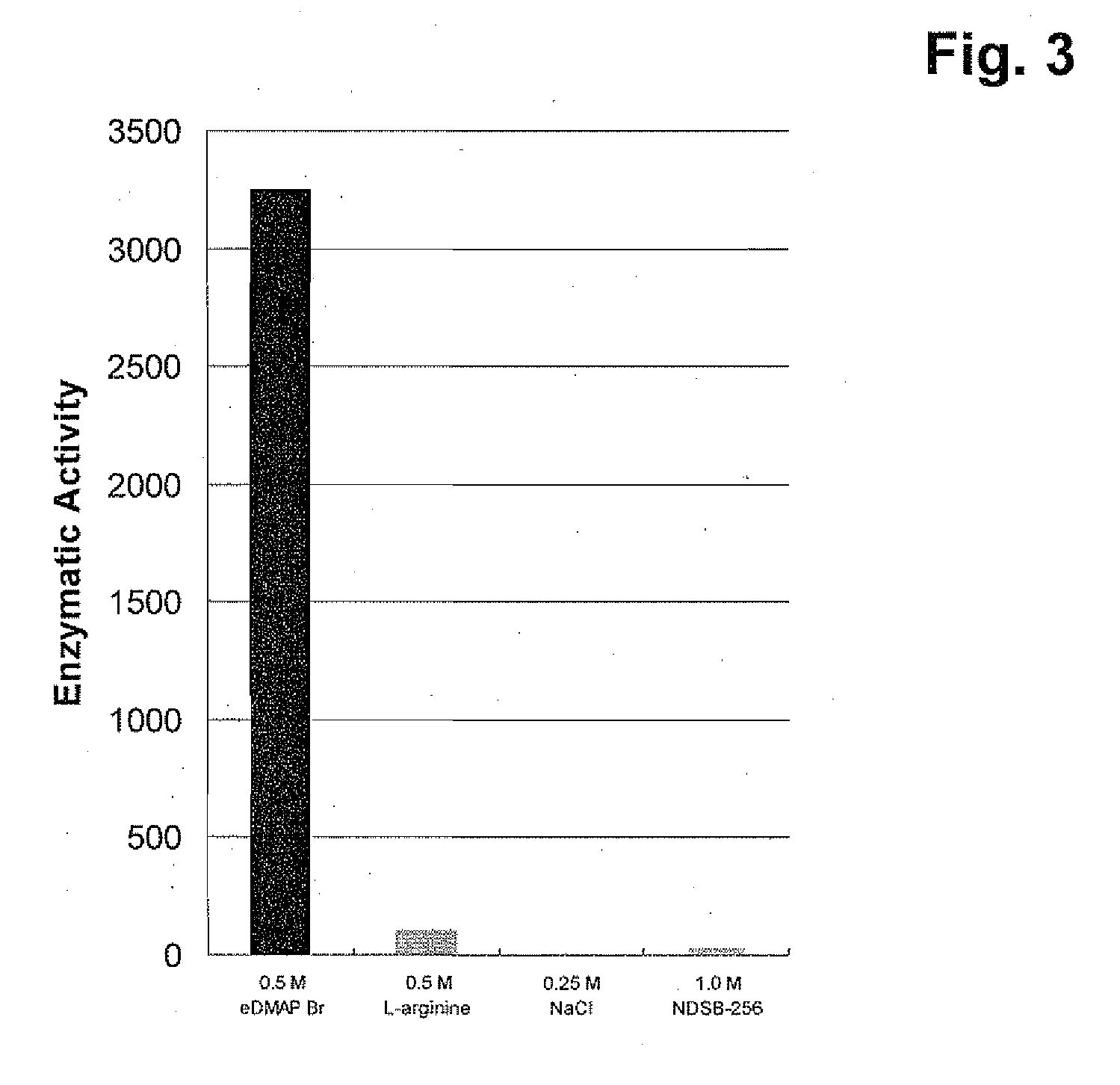Method and agent for refolding proteins
a protein and refolding technology, applied in the field of refolding proteins, can solve the problems of many recombinant proteins that remain intractable, and achieve the effect of decreasing the aggregation of proteins and increasing the thermal stability
- Summary
- Abstract
- Description
- Claims
- Application Information
AI Technical Summary
Benefits of technology
Problems solved by technology
Method used
Image
Examples
example 1
Denaturation (or Solubilization) and Reduction of Proteins Expressed as Inclusion Bodies
[0111]Proteins in the form of inclusion bodies are denatured, solubilized, and reduced by stirring inclusion bodies in a solution of 50 mM IRIS, pH 8.0, 7.0 M guanidine hydrochloride, 0.2 M NaCl, 2.0 mM EDTA, and 10 mM TCEP for approximately 2 hours at room temperature. The sample is centrifuged at 25,000×g for 15 minutes at 4° C. and then passed through a 0.45 μm filter to remove any insoluble material. The concentration of the protein sample is determined using the bicinchoninic acid (BCA) method (for example, see: Smith, P. K., et al. (1985). Anal. Biochem. 150, 76-85 or product number 71285 from EMD Chemicals or product number 23225 from ThermoFisher).
example 2
Refolding of Matrix Metalloprotease 12 using N-ethyl-4-(N,N-dimethylamino)pyridinium bromide, 1-butyl-3-methylimidazolium chloride, or 1-ethyl-3-methylimidazolium chloride
[0112]The refolding of matrix metalloprotease 12 (MMP12), present in 50 mM TRIS, pH 8.0, 7.0 M guanidine hydrochloride, 0.2 M NaCl, 2.0 mM EDTA and 10 mM TCEP, is performed by rapidly diluting the protein into the refolding buffer at a ratio of 1:50. The final concentration of the protein is 100 μg / mL. The refolding buffer is 50 mM bis-TRIS, pH 6.5, containing 0.5 M of the ionic liquid N-ethyl-4-(N,N-dimethylamino)pyridinium bromide, 1-butyl-3-methylimidazolium chloride, or 1-ethyl-3-methylimidazolium chloride. Refolding samples are incubated at 22±2° C. for 20-24 hours with shaking at 300 RPM. After refolding, samples are dialyzed against 50 mM TRIS, pH 7.5, 0.15 M NaCl, 2.0 mM CaCl2, 1.0 μM ZnCl2 and 0.03% (v / v) Brij-35 at a sample to buffer ratio of 1:40,000, or greater, for 20-24 hours at 10±2° C. Refolding is ...
example 3
Refolding of the Thioredoxin-Green Fluorescent Protein Fusion Using 4-(3-hydroxypropyl)-4-methylmorpholinium chloride and Comparison to the Refolding Agents L-Arginine, NaCl, and Non-Detergent Sulfobetaine 256
[0114]The refolding of the thioredoxin-green fluorescent protein fusion (trx-GFP), present in 50 mM TRIS, pH 8.0, 7.0 M guanidine hydrochloride, 0.2 M NaCl, 2.0 mM EDTA and 10 mM TCEP, is performed by rapidly diluting the protein into the refolding buffer at a ratio of 1:50. The final concentration of the protein is 100 μg / mL. The refolding buffer is 50 mM TAPS, pH 8.5, 7.6 mM reduced glutathione, 2.4 mM oxidized glutathione and 0.5 M of the ionic liquid 4-(3-hydroxypropyl)-4-methylmorpholinium chloride or one of three control refolding additives: 0.5 M L-arginine, 0.25 M NaCl, or 1.0 M non-detergent sulfobetaine 256. Refolding samples are incubated at 22±2° C. for 20-24 hours with shaking at 300 RPM. After refolding, samples are dialyzed against 50 mM TRIS, pH 8.0 at a sample ...
PUM
| Property | Measurement | Unit |
|---|---|---|
| Thermal stability | aaaaa | aaaaa |
Abstract
Description
Claims
Application Information
 Login to View More
Login to View More - R&D
- Intellectual Property
- Life Sciences
- Materials
- Tech Scout
- Unparalleled Data Quality
- Higher Quality Content
- 60% Fewer Hallucinations
Browse by: Latest US Patents, China's latest patents, Technical Efficacy Thesaurus, Application Domain, Technology Topic, Popular Technical Reports.
© 2025 PatSnap. All rights reserved.Legal|Privacy policy|Modern Slavery Act Transparency Statement|Sitemap|About US| Contact US: help@patsnap.com



